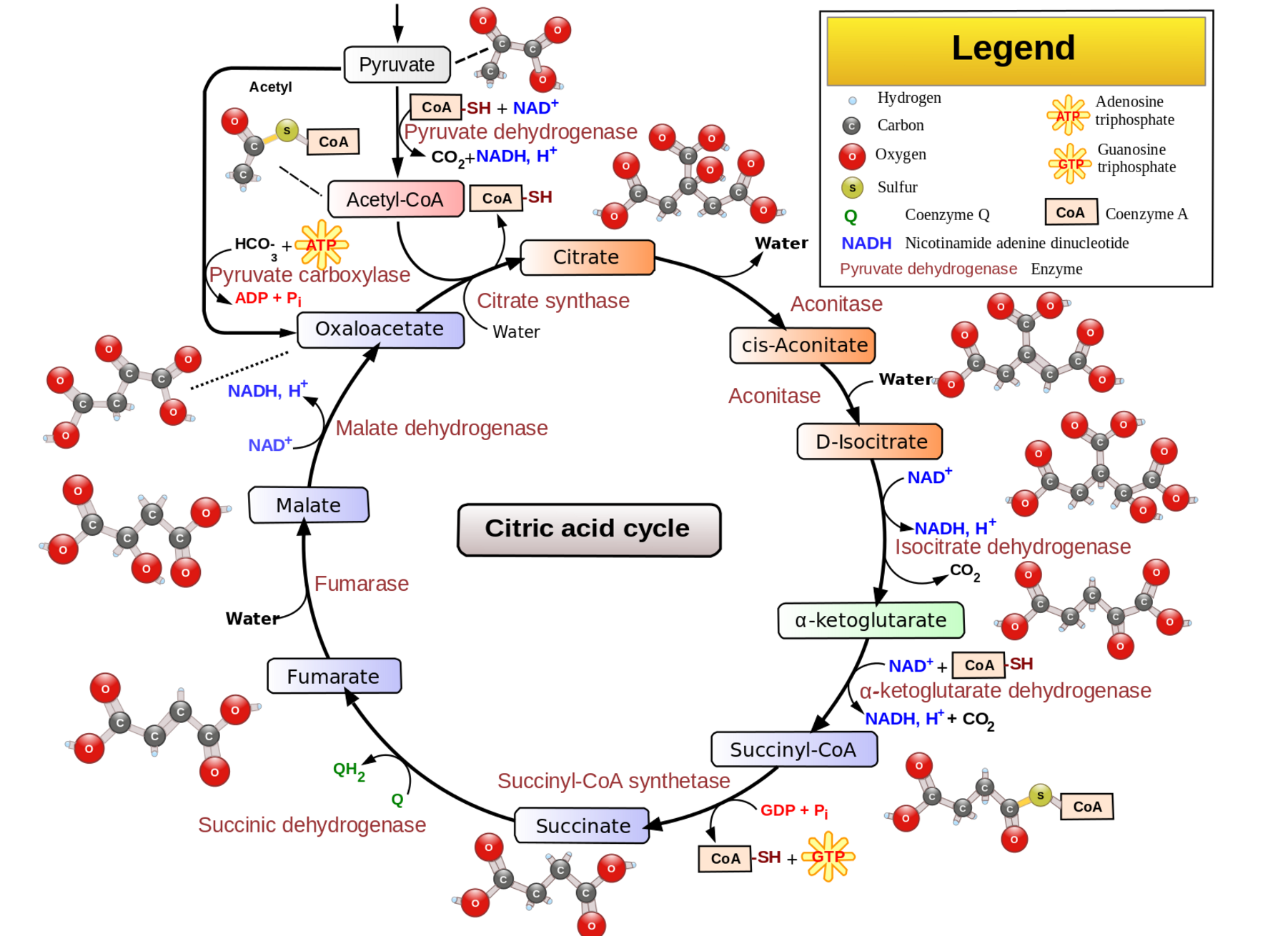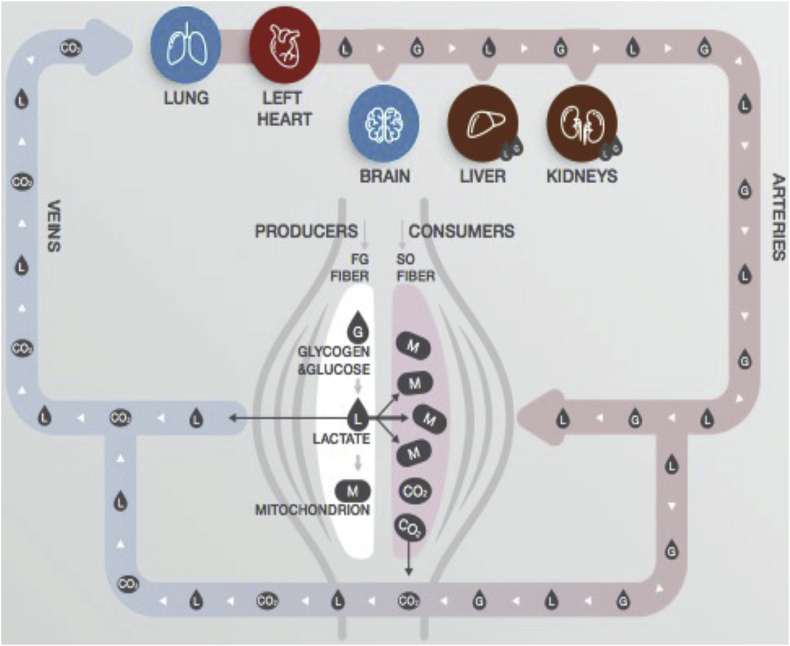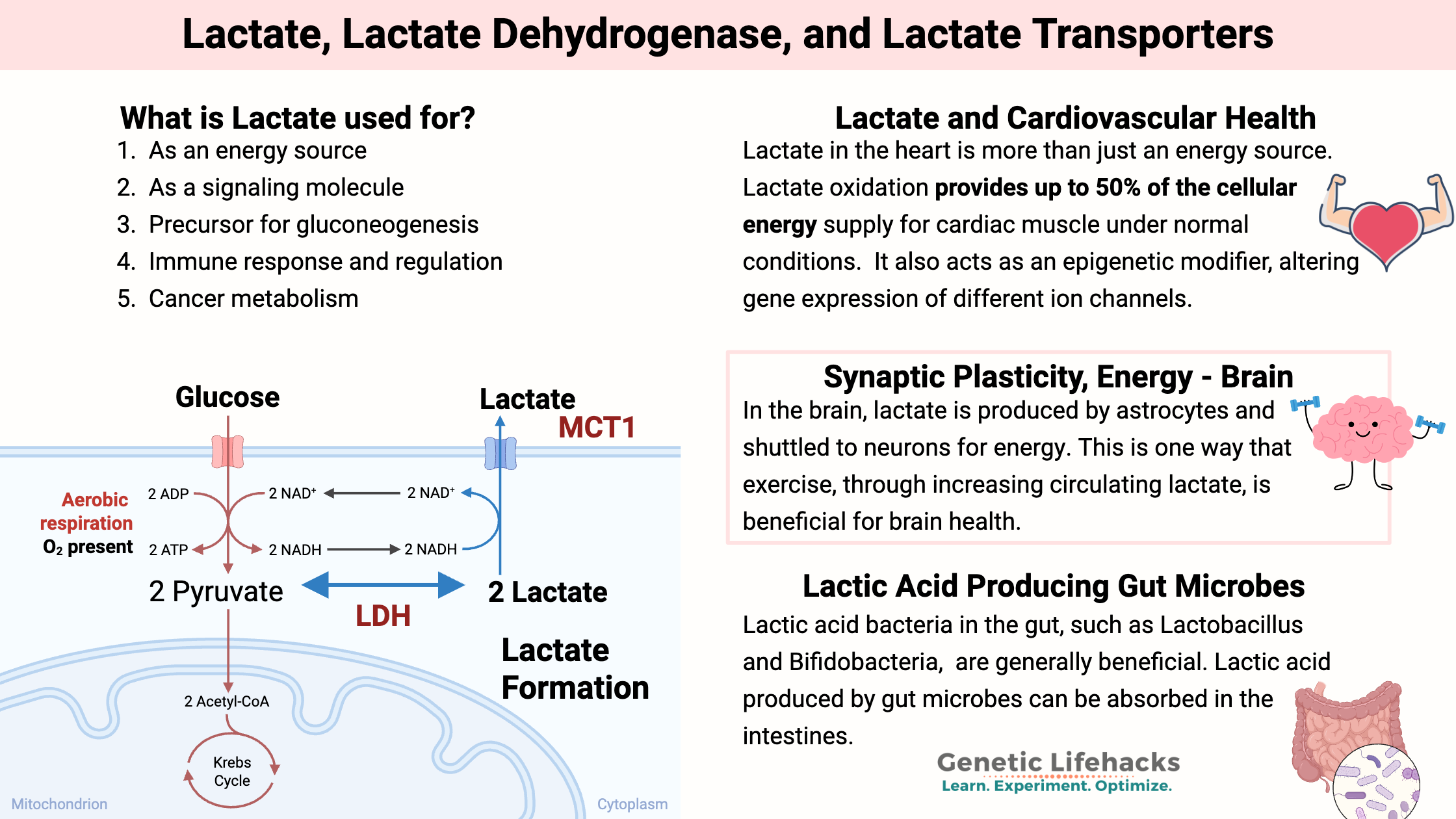Key takeaways:
~ Lactate is an essential cellular energy source that is particularly important in skeletal muscles, the brain, and the heart.
~ Lactate also acts as a signaling molecule and influences metabolism and gene expression.
~ Lactate transport and metabolism play a fundamental role in several chronic health conditions, including cardiovascular disease, neurodegeneration, and fertility issues.
~ Genetic variants in the lactate transport genes can influence your need for lactate and response to exercise.
Lactate: Cellular Energy Source
Sore muscles after a hard workout is often the first thing that comes to mind when thinking of lactate. The classic view of lactate is that it is a metabolic waste product that accumulates in your muscles. However, this is far from the truth when it comes to this fundamental cellular compound.
Lactate is formed when cells create ATP from glucose. Rather than being a waste product, lactate is a major source of energy in the body. It is now considered a glucose-sparing molecule that can fuel the brain or muscles.
Let’s dive into the details on what lactate is used for, how lactate is formed, how it moves around in the body, and how your genes may influence cellular energy from lactate.
What is lactate used for?
- Lactate as an energy source
- Lactate as a signaling molecule
- Precursor for gluconeogenesis
- Interactions with the immune response and regulation
- Cancer metabolism
1) Lactate as an energy source:
Cells make ATP to store energy for use in many different cellular reactions. In the cytosol, ATP can be generated by breaking down glucose into two molecules of pyruvate and NADH. This process produces two ATP molecules and is called glycolysis.
Cells can also produce a lot of ATP in the mitochondria through the Krebs cycle, also called the citric acid cycle, and through oxidative phosphorylation. The Krebs cycle uses the pyruvate from the cytosolic breakdown of glucose.

Where does lactate fit into this?
Pyruvate can either be transported into the mitochondria for ATP production, or it can be converted into lactate in the cytosol.
Pyruvate <–> Lactate
The enzyme lactate dehydrogenase (LDH) catalyzes the conversion of pyruvate to lactate. This isn’t a one-way street, though. The LDH enzyme also catalyzes the conversion of lactate back to pyruvate.
The balance of glucose, lactate, and pyruvate in cells is important. Blood glucose levels and insulin resistance receive a lot of attention from health-conscious people, and rightly so. But lactate plays an important role in this balancing act as a substrate that can be used for ATP synthesis.
Isotope tracing shows that cells balance out the uptake of glucose, its conversion to pyruvate (glycolysis), and then either mitochondrial ATP production or lactate synthesis.
If the mitochondria aren’t able to handle or don’t need pyruvate for the Krebs cycle, it converts to lactate, which can then be transported out of the cell and used elsewhere in the body. When a cell needs more ATP from the mitochondria, lactate can be transported into cells to be converted to pyruvate and then ATP in the mitochondria.[ref]
The interconversion of lactate and pyruvate by LDH is driven by the lactate concentration. There is usually 20X more lactate than pyruvate in the cytosol.
This flux of pyruvate to lactate means that glycolysis can occur in the cytosol when glucose is available, but it doesn’t have to be coupled with mitochondrial ATP production. In other words, without the ability to convert pyruvate to lactate, every pyruvate molecule would need to be converted to ATP in the mitochondria. Lactate allows that to be decoupled.
Excess lactate can be transported out of cells and either into nearby cells or it can circulate. For example, in skeletal muscles, lactate is produced when exercising and is exported for use as energy in other muscle cells. There is cell-to-cell shuttling of lactate, and it can also circulate for use in other organs.[ref]
Studies show that heart and skeletal muscle cells preferentially use lactate over glucose as an energy source. In some situations, the brain also preferentially uses lactate. Lactate conversion to pyruvate for ATP production is a single step, while glycolysis (conversion of glucose) involves multiple steps that are less efficient. [ref]

2) Lactate as a signaling molecule
Circulating lactate acts as a signaling molecule in the brain, heart, and adipose tissue. The GPR81 receptor (HCAR1 gene) is stimulated by lactate. It acts as a metabolic sensor to regulate several systems in the body based on energy metabolism.[ref] In adipose tissue, higher lactate levels inhibit lipolysis.[ref][ref]
In the brain, lactate binding with CGRP receptors is believed to play a role in regulating fat metabolism during exercise.[ref] The GPR81 receptor also plays a role in protecting the brain during times of energy deficit, such as during a stroke or brain injury.[ref]
In the heart, lactate acts as an energy molecule, especially during exercise or exertion. Recent research also shows that in heart disease, lactate levels may rise in the heart muscle and accumulate, causing disturbances in the physiology of how the heart contracts.[ref]
Access this content:
An active subscription is required to access this content.
Related Articles and Topics:

